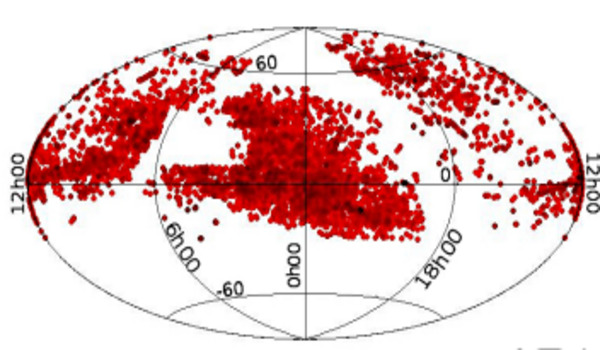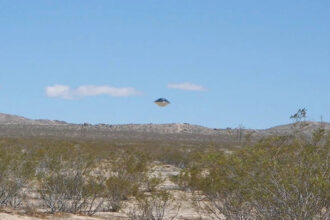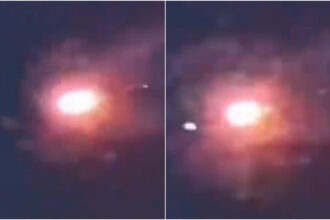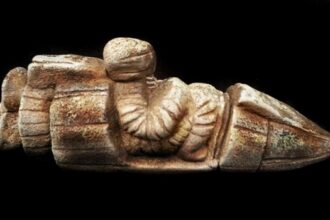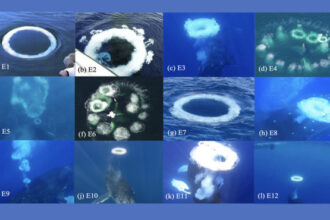A new study led by Beatriz Villarroel proposes an innovative and low-cost method to search for extraterrestrial artifacts that may be occupying or may have once occupied near-Earth orbit. The central idea is simple yet clever: use Earth’s own shadow as a natural filter to detect unidentified luminous objects reflecting sunlight.
Using data from the Zwicky Transient Facility (ZTF) telescope, the researchers analyzed brief light events (known as “transients”) occurring within Earth’s shadow. The results showed that this method can indeed detect unusual objects, opening up a new frontier in the search for extraterrestrial intelligence—without relying on radio signals or interstellar travel.
This practical, economical approach, based on existing technology, could revolutionize SETI (Search for Extraterrestrial Intelligence) efforts by offering a new window into detecting possible alien probes in our own “cosmic backyard.”
The study, peer-reviewed and published on August 4th in the respected journal Monthly Notices of the Royal Astronomical Society, is also available through Oxford Academic. It strengthens the study’s credibility and broadens its international visibility. Lead author Beatriz Villarroel is already known for proposing innovative and multidisciplinary approaches to astrobiology and the search for extraterrestrial intelligence.
The key idea here is that by observing Earth’s shadow—a region where the Sun is completely blocked—any object still shining or reflecting light could indicate something artificial or unexpected. This effectively rules out natural phenomena like stars and most conventional satellites, greatly reducing “background noise” and highlighting genuinely anomalous candidates.
Although the authors did not confirm the presence of any alien probes, the methodology proved promising for future observational campaigns. They recommend further investigations using other telescopes and across different light bands (including infrared), which could enhance sensitivity and increase the chances of discovering something truly extraordinary.
What makes this proposal especially provocative is that it doesn’t rely on assumptions about radio signals or intentional contact by alien civilizations. Instead, it considers the possibility of silent, uncrewed probes that might already be in the vicinity of our planet—monitoring, exploring, or even forgotten long ago by some advanced civilization.

The use of the NEOrion software for detecting and analyzing objects in the Earth’s shadow has proven to be an essential tool for filtering and characterizing possible extraterrestrial artifacts. Through rigorous criteria—such as calculating the signal-to-noise ratio, object morphology (including elongation, area, maximum intensity, and Gini coefficient), and comparison with existing astronomical catalogs—it was possible to separate valid detections from artifacts and noise, as well as to identify objects with specific features like elongations or streaks. This systematic approach enabled the creation of subsets that facilitate the study and prioritization of the most promising targets.
The process also considered the recurrence of detections to eliminate variable sources and momentary noise, as well as the angular distance between detected objects to avoid false positives originating from slow-moving or uncatalogued sources. This detailed analysis significantly reduces contamination of the data set and increases confidence in the identified candidates, even in the face of limitations such as the short duration of exposures and telescope movement.
Despite the inherent limitations of the images captured by the ZTF, such as the short exposure interval per field and the inability to capture extended multiple transient events over time, the applied method proves robust and promising for identifying atypical luminous phenomena in the Earth’s shadow. Future studies, including automating the confirmation of objects detected in consecutive temporal images, as well as the use of new technologies such as the ExoProbe project, are expected to further improve the capability to search for and characterize these events, paving the way for the possible detection of probes or technological artifacts of extraterrestrial origin in our orbit.
However, this pioneering research paves the way for future advances, such as the ExoProbe project, which proposes the use of a network of telescopes equipped with high-resolution cameras and synchronized short exposure times to capture and precisely locate transient events at multiple observation points. This technique will allow the instantaneous acquisition of parallaxes, facilitating the determination of the distances and origins of detected objects—crucial for distinguishing between natural phenomena and potential extraterrestrial artifacts.
The most provocative aspect of this proposal is the fact that it does not rely on assumptions about radio signals or intentional contacts by alien civilizations. On the contrary, it considers the possibility of silent, unmanned probes that may already be in the vicinity of our planet—monitoring, exploring, or even forgotten by some advanced civilization long ago.
In summary, the search for alien probes in the Earth’s shadow presents a unique opportunity to minimize interference caused by solar reflections and human-made objects, making the detection of anomalous signals clearer and more reliable. With the advancement of technologies and methodologies, future observations may identify objects with unusual spectra or motions, increasing the chance of detecting evidence of technological artifacts of extraterrestrial origin in our spatial neighborhood.




